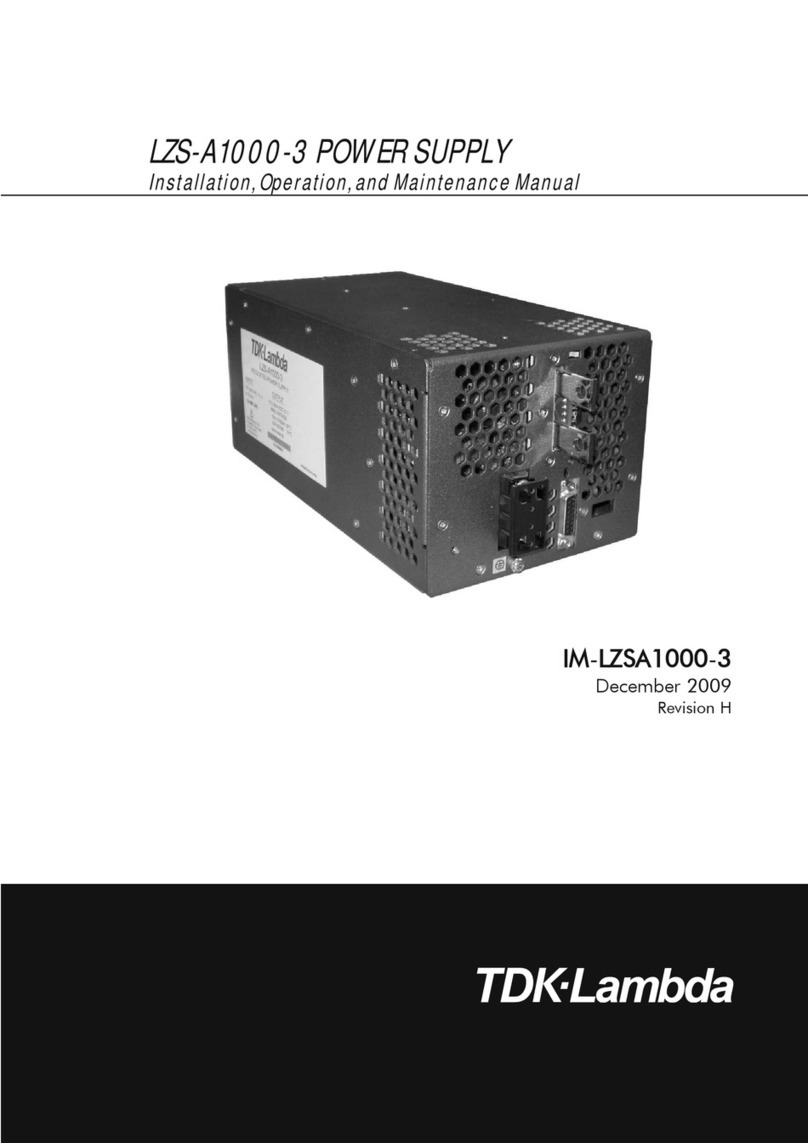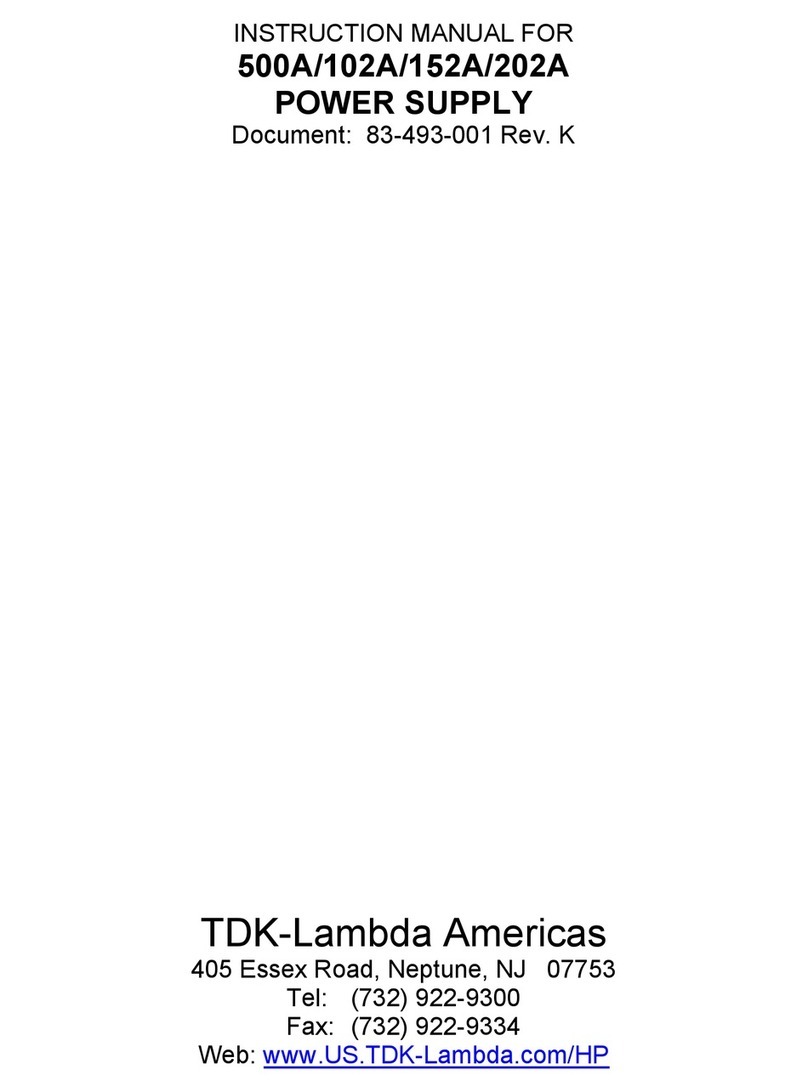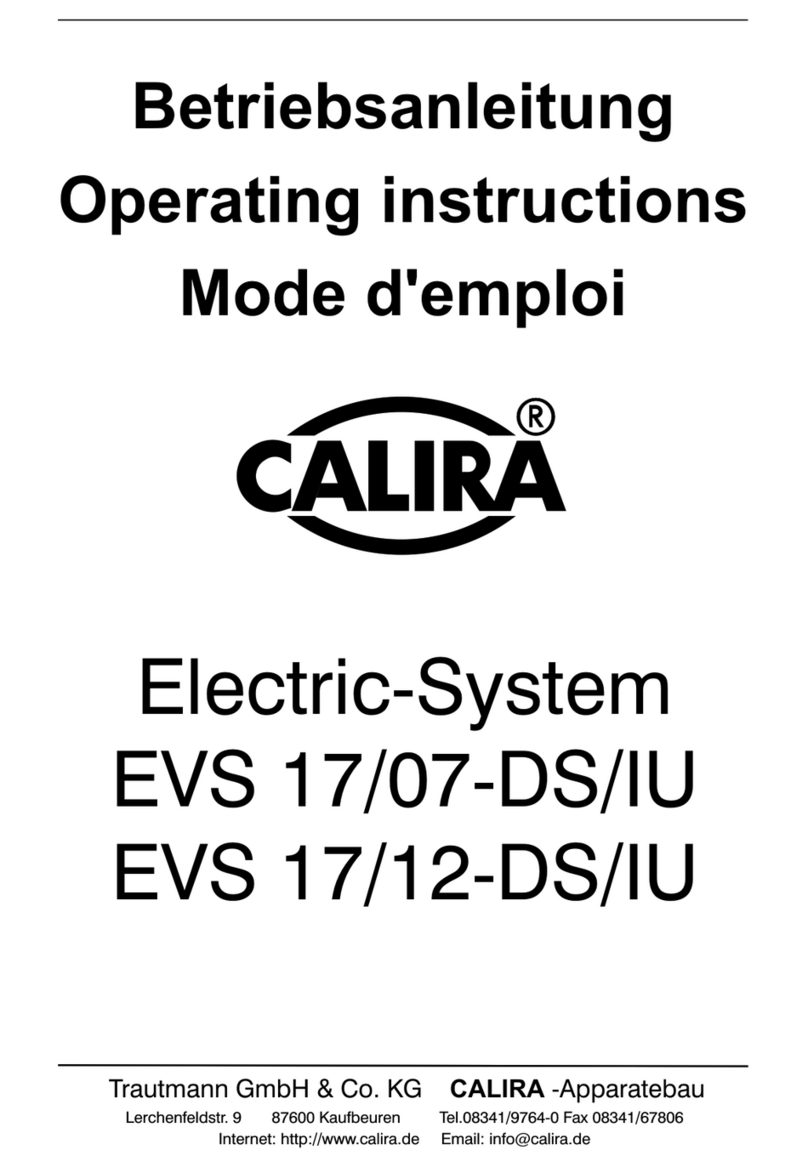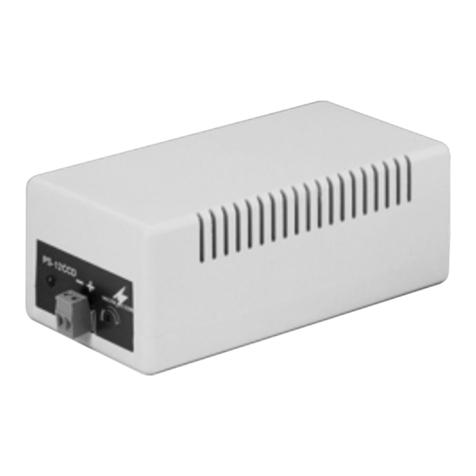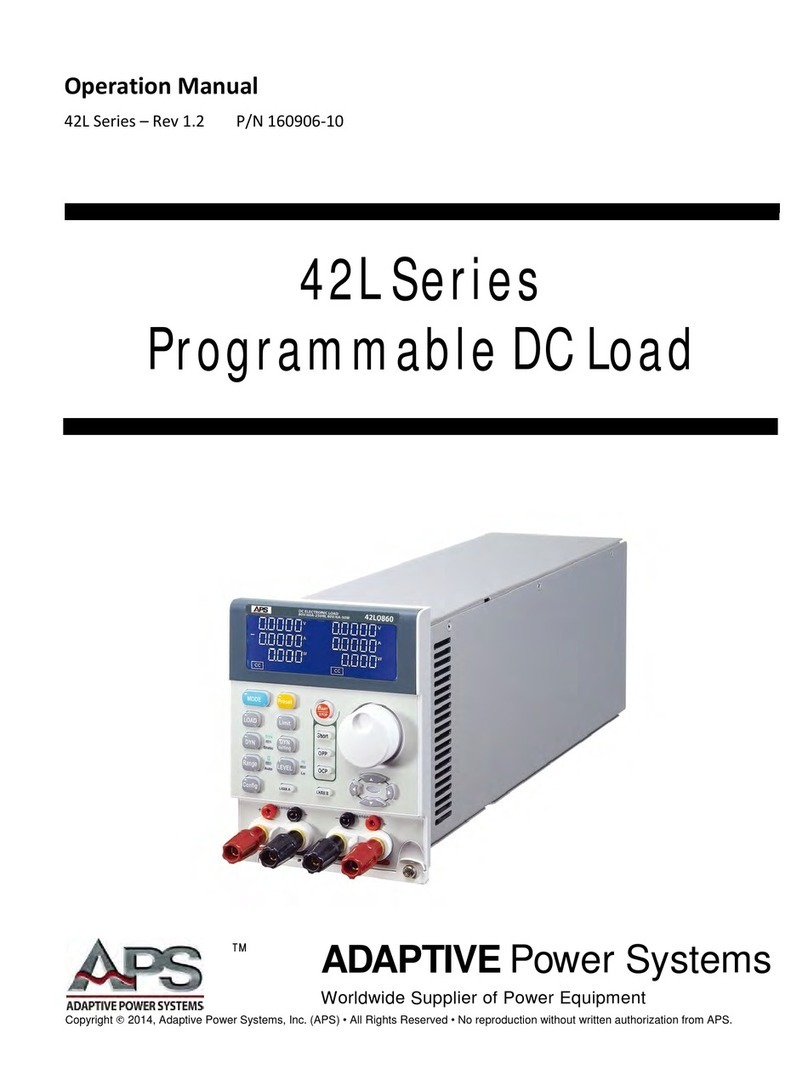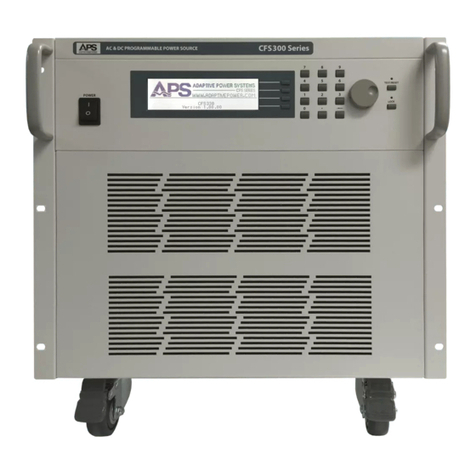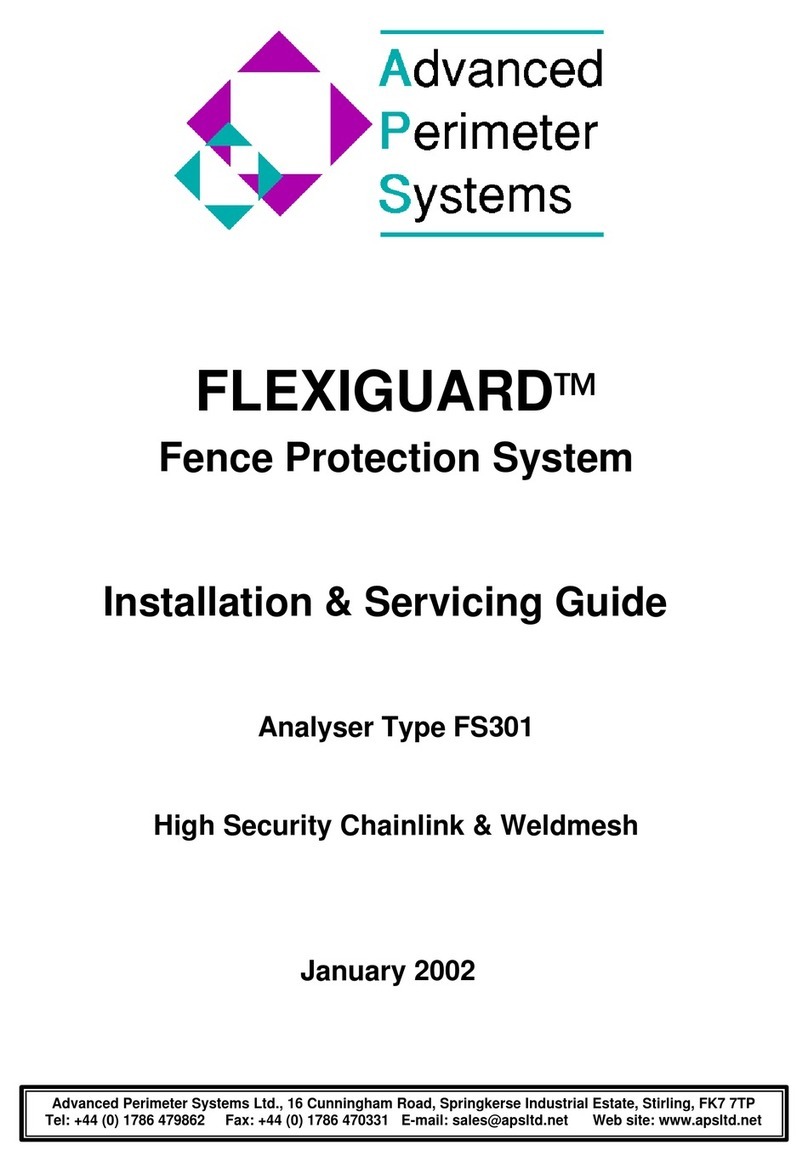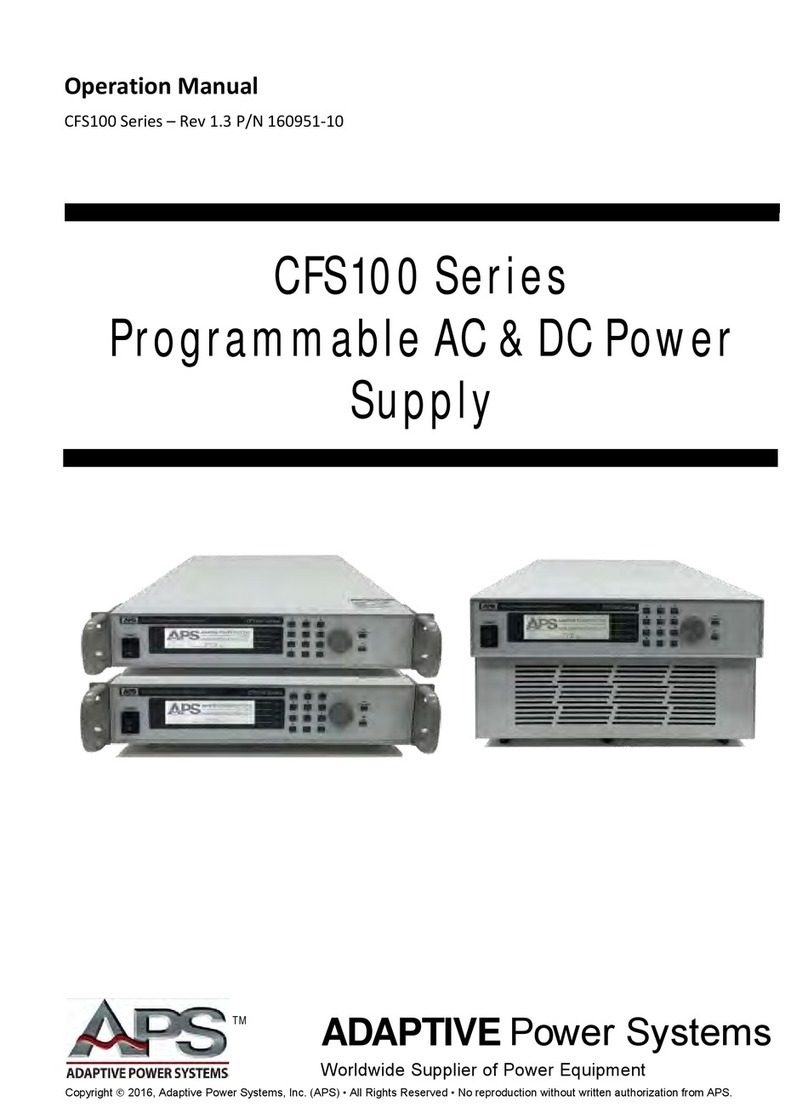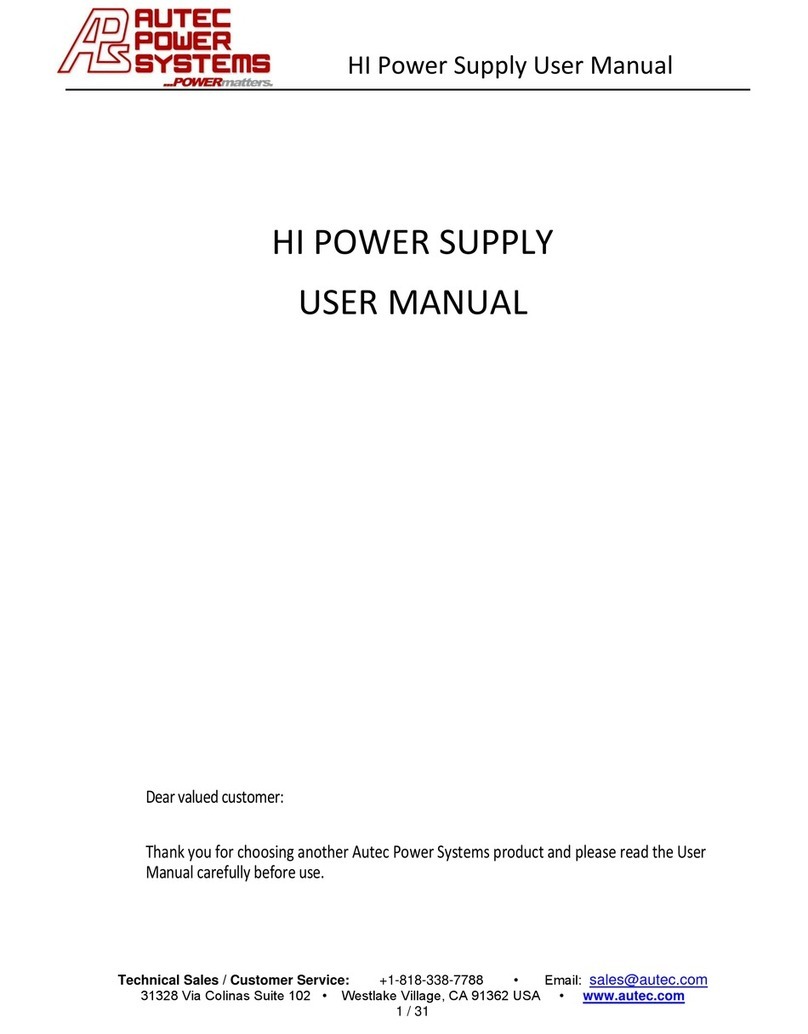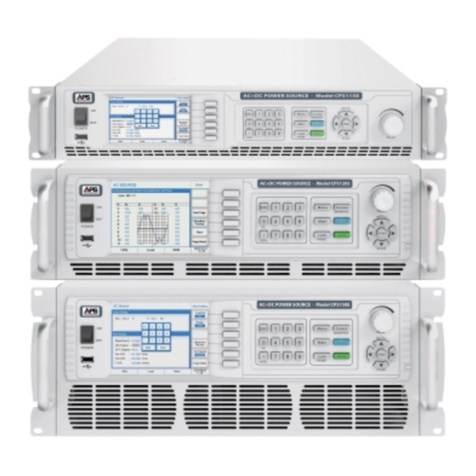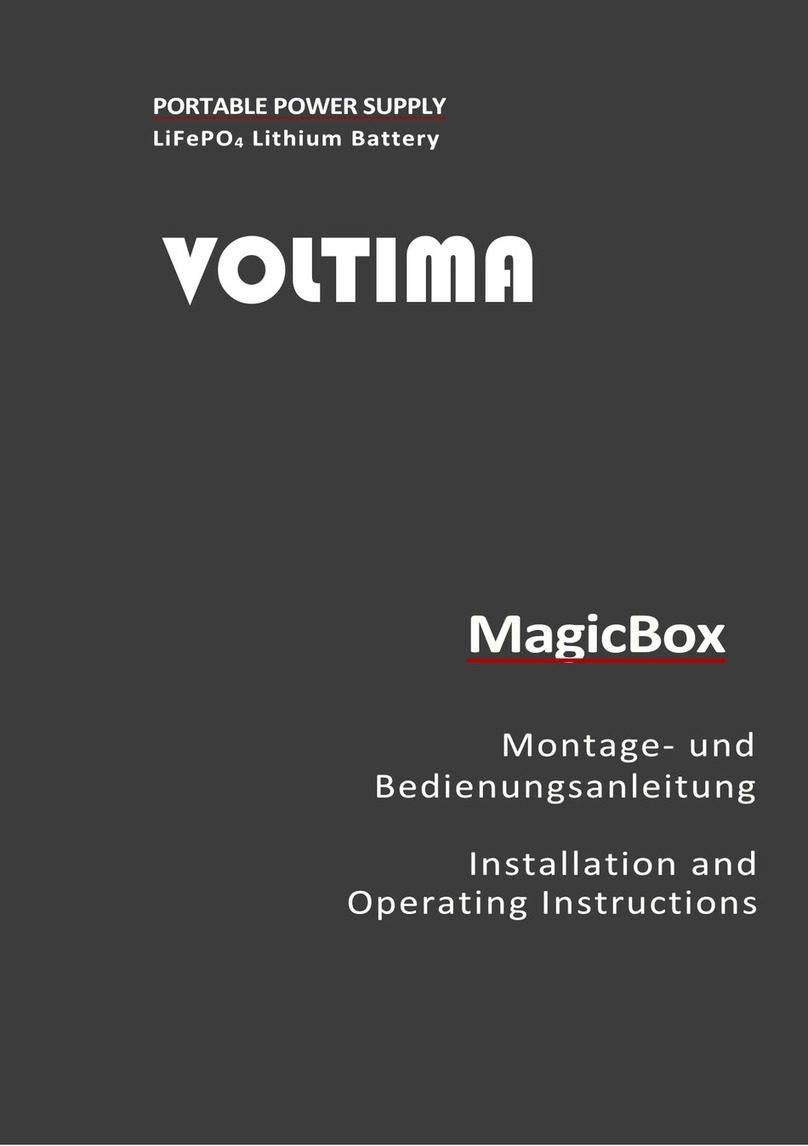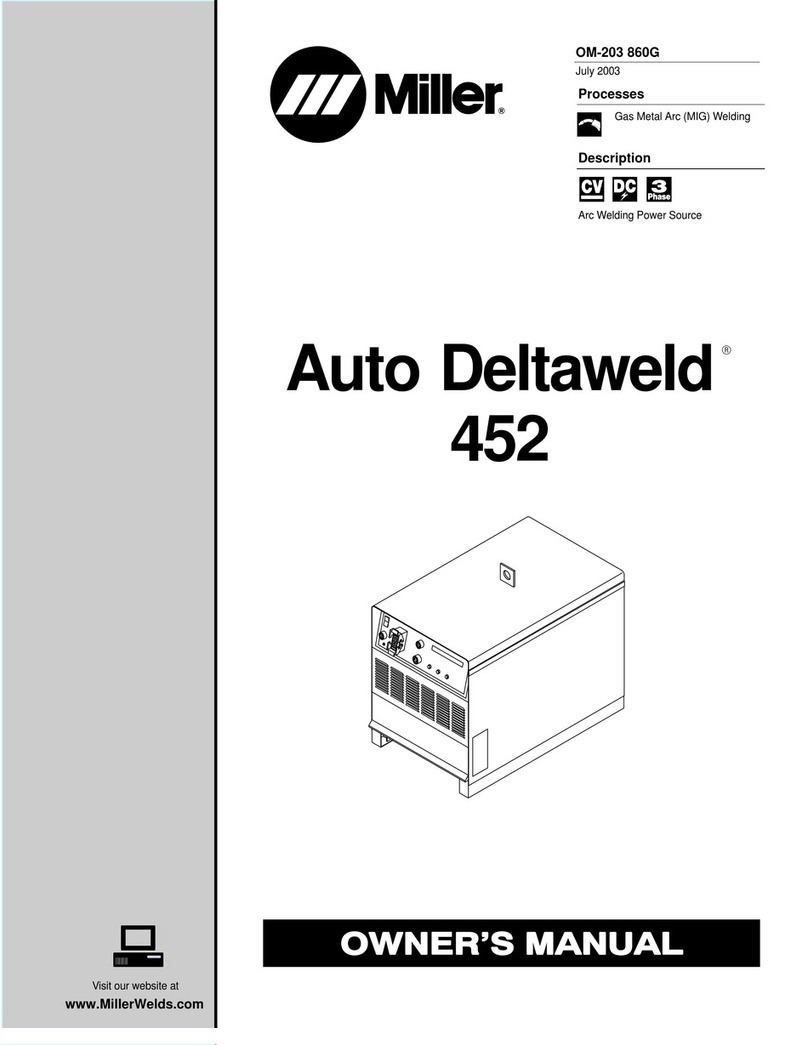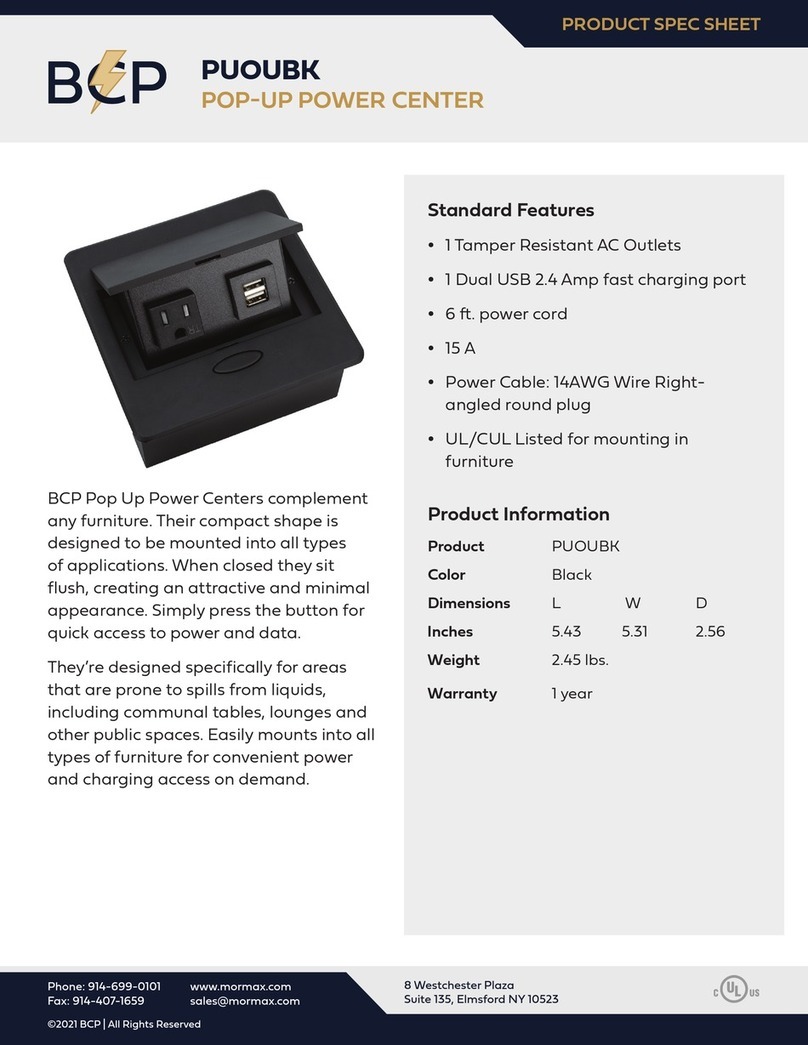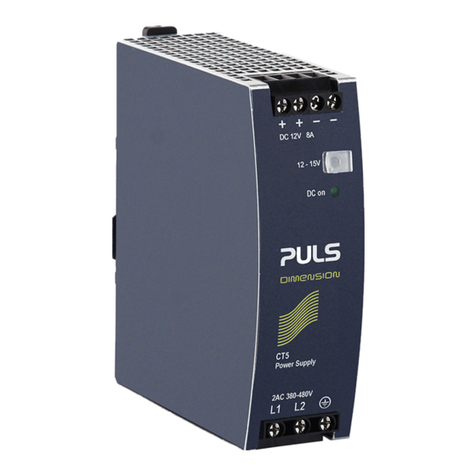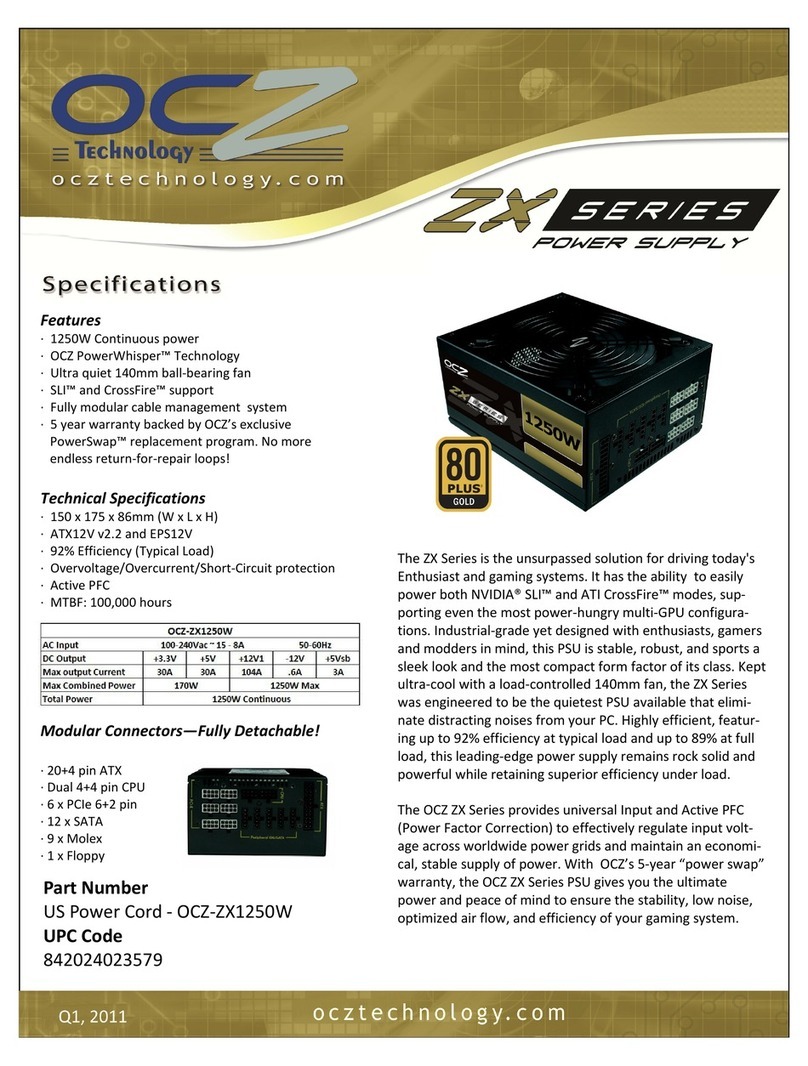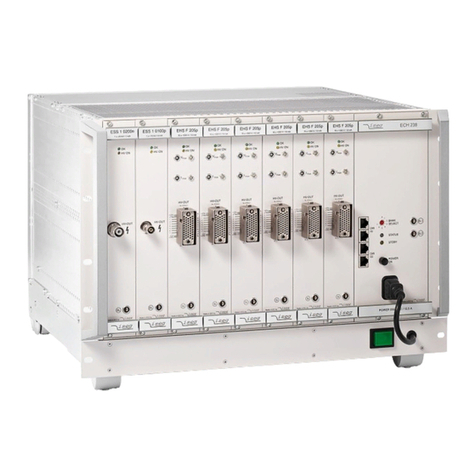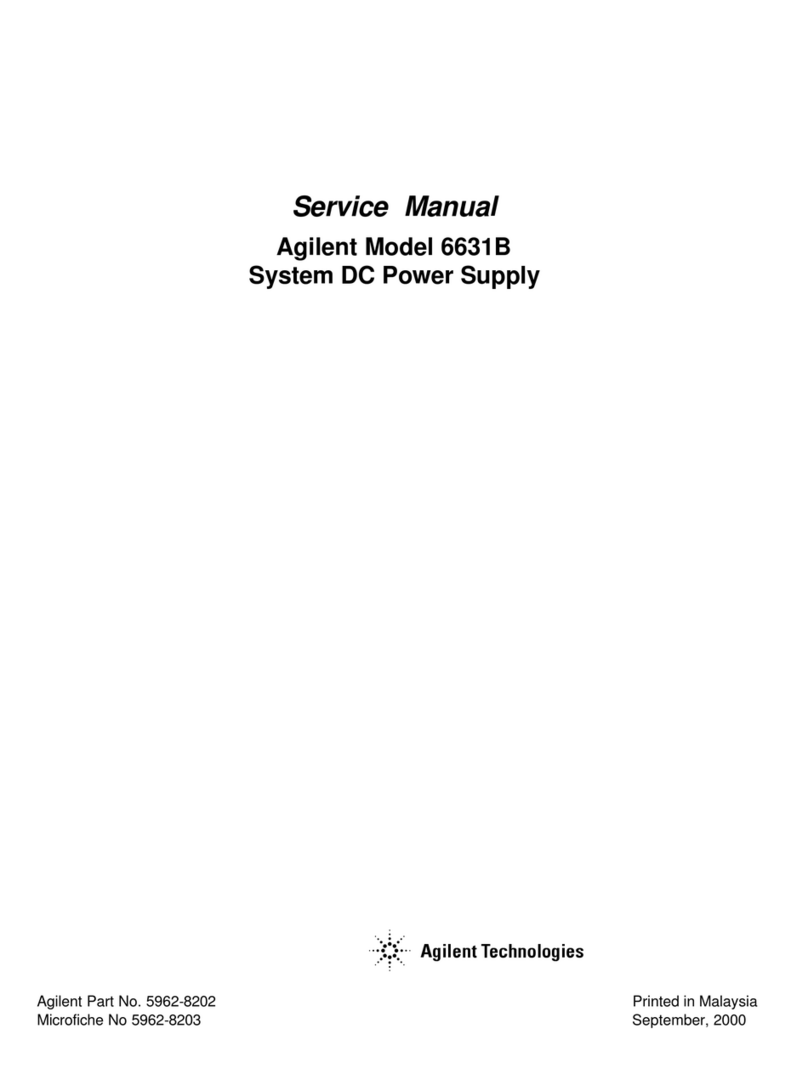
DCB SERIES OPERATION MANUAL
CONTENTS
Entire Contents Copyright 2019 by Adaptive Power Systems, Inc. (APS) • All Rights Reserved • No reproduction without written authorization from APS.
DCB Series DC Power Supply Operation Manual Page 5 of 270
6.3.1 Turn On the Power Supply ............................................................................................................................... 87
6.3.2 Turn Off the Power Supply............................................................................................................................... 87
6.3.3 MENU System Overview .................................................................................................................................. 87
6.3.4 Adjustment or User Limits ............................................................................................................................. 102
6.3.5 Changing Operating Modes ........................................................................................................................... 103
6.3.6 Manual Adjustment of Set Values ................................................................................................................. 103
6.3.7 Metering / Read back Displays ...................................................................................................................... 105
6.3.8 Turning Output DC ON or OFF ....................................................................................................................... 105
6.3.9 Saving data to USB Memory Device (Data Logging) ..................................................................................... 106
6.4 Remote Control ................................................................................................................................... 108
6.4.1 General Analog I/O Info.................................................................................................................................. 108
6.4.2 Control Locations............................................................................................................................................ 108
6.4.3 Remote Control using Analog Interface (AI) .................................................................................................109
6.5 Alarms and Monitoring....................................................................................................................... 115
6.5.1 Definition of Terms......................................................................................................................................... 115
6.5.2 Unit Alarm and Event Handling ..................................................................................................................... 115
6.5.3 User defined events........................................................................................................................................ 117
6.6 Front Panel Lockout ............................................................................................................................ 118
6.7 Limits Settings Lock ............................................................................................................................. 119
6.8 Function Generator Use...................................................................................................................... 120
6.8.1 FG Introduction............................................................................................................................................... 120
6.8.2 General FG Description .................................................................................................................................. 120
6.8.3 Method of Operation ..................................................................................................................................... 122
6.8.4 Manual Operation .......................................................................................................................................... 123
6.8.5 Since Wave Function ...................................................................................................................................... 125
6.8.6 Triangular Function......................................................................................................................................... 126
6.8.7 Rectangular Function ..................................................................................................................................... 127
6.8.8 Trapezoidal function....................................................................................................................................... 128
6.8.9 DIN 40839 Function........................................................................................................................................ 129
6.8.10 Arbitrary Function........................................................................................................................................... 130
6.8.11 Ramp Function................................................................................................................................................ 136
6.8.12 UI and IU Table Functions (XY Table)............................................................................................................. 136
6.8.13 PV Table Function (Photovoltaics)................................................................................................................. 138
6.8.14 FC Table Function (Fuel Cell) .......................................................................................................................... 140
6.8.15 Extended PV table function according to EN 50530..................................................................................... 142
6.8.16 Battery Test Function ..................................................................................................................................... 151
6.8.17 MPP tracking function.................................................................................................................................... 156
6.9 Remote Control of the Function Generator....................................................................................... 160
7Remote Control Programming................................................................................................161
7.1 Overview.............................................................................................................................................. 161
7.2 General Comments ............................................................................................................................. 161
7.2.1 Interface Startup Times.................................................................................................................................. 161
7.2.2 Linear Network Topologies ............................................................................................................................ 161
7.2.3 Browser HTTP Access ..................................................................................................................................... 161
7.2.4 TCP Network Access ....................................................................................................................................... 162
7.2.5 General Unit Communication ........................................................................................................................ 162
7.2.6 Message timing and command execution time ........................................................................................... 163
7.3 Communications Protocols Overview................................................................................................ 164
7.3.1 Supported Protocols by Interface Module.................................................................................................... 165
7.3.2 Remote Control Characteristics..................................................................................................................... 165
7.3.3 Fragmented messages on serial transmissions............................................................................................. 166
7.3.4 Connection Timeout....................................................................................................................................... 166
7.3.5 Effective Programming Resolution ................................................................................................................ 166


